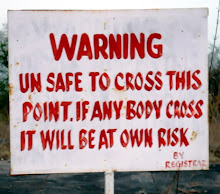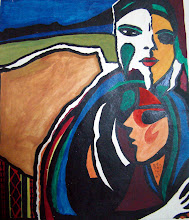(Draft for comments only — Not to be cited except in www.misual.com)
Mizo political insurgency came to an end in 1986. However, to many people; this was not just the end. Rather, another painful journey way ahead. The memory of the trauma lingers on in many individual lives. With the ongoing reconstruction of the state of Mizoram in post-insurgency period, vast literatures on insurgency has been produced in academic institutions across India. Unfortunately, such literatures rarely touch how an ethnic individual reads the history of insurgency ‘from below’. Once, conflict, battle and war constituted an important theme in Mizo oral tradition that Mizo heroes were the protagonists, their antagonists were the other ethnic groups, the British colonial power and the postcolonial nation state of India. Such narratives formed an important theme in the local construction of their past. C.Zama has a unique place in the recollection of ethnic memories and history of insurgency in Mizoram.
C.Zama was born in the village of Samlukhai (Northern part of Mizoram) in 1949. To pursue his education, he moved to Aizawl (present capital) in 1952 and completed his primary and middle education. This period witnessed a critical condition in the Mizo hills. In 1946, the district ruling party, Mizo Union agreed to merge with the Indian Union. On 29 October 1958, the Mizo District Council passed a resolution cautioning the government (Assam) to sanction relief funds for the impending famine. However, the government rejected the request on the grounds that such predictions of famine were only tribal superstition. In 1959, standing crops were devastated by millions of rats. Majority of the people who were fully dependent on jhum agriculture for their subsistence were subjected to starvation. It was nearly too late when the government forced to admit her mistake. The famine became worse in almost every part of Mizo Hills. The Mizo National Famine Front offering social service to the people in time of famine was ultimately transformed into a new political party called “Mizo National Front” (MNF) on 22nd October 1961 with the aim of contesting their marginality against the government.
“During the fifteen years of close contact and association with India, Mizo people have not been able to feel at home with India or in India, nor have they been able to feel that their joys and sorrow have really ever been shared by India. They do not, therefore feel Indian”
In February, 1966, Mizo National Front (MNF) overran the entire State in a series of simultaneous and surprise attacks. The Indian army quickly responded with brutality which was in fact seldom seen in the subcontinent and little report to the outside world. It was under this critical situation that C.Zama attended his second year in Government high School at Aizawl. As a young man, he was strongly inspired by the idea of ethnic-nationalism; he immediately left the school and joined insurgency group (Mizo National Front) in 1966.
His experience in the insurgency war (the central theme of his work) was a mixture of ethnic heroism and hardship. Many times, he had been arrested by Indian army and managed to escape several times as well.
“Ka rammut lai hian India sipai nena inkahnaah vawi engemawzat ka tel a. Mihring ngaiha thihna ngei turah tum 4 Pathianin min chhanchhuak a ni.” - “During the course of insurgency, I experienced many encounters with the Indian army. I was supposed to die, but GOD help me to escape those deaths”.
In June 1975, he was arrested for the last time and bailed out of jail the next year. Constant talk between India and Mizo National Front took place. When, the chapter of insurgency was about to close, C.Zama wished to continue with a normal life and continued his studies as a dedicated citizen of India. In 1982, he graduated from Pachhunga University College.
When peace was restored in 1986, he dedicated his time for the recollection of ethnic memory during insurgency period. His first Mizo book “Mizo pasalthate Part-I” (Mizo warrier) was published in 1989. Based on his experience in the insurgency group, he focused on recollection of insurgent army life during the course of war in Mizoram. Their hardships as well as their aspiration for the future Mizo society are highlighted from counter perspective point of view. His second book “Mizo pasalthate Part II”-(Mizo Worrier) was published in 1990. His extensive reading on archive as well as oral interview of the ex-Mizo National Army was remarkable. He successfully uncovered the many lost voices of the people who are in the insurgency war. Another book titled “Chhim keite a fam ta, Thangrehlova chanchin” (The death of southern leopard: Biography of Thangrehlova) was released in the same year of 1990. In the next year, another autobiographical work, “Mi huaisen Capt. Lalhleia chanchin” (Ethnic worrier: Biography of Capt.Lalhleia)(1991) was released in Mizoram. Both books traced/follows the two individual lives of their achievement and self-dedication in the struggle for independent movement in Mizoram. In the post insurgency period, both Thangrehlova and Capt. Lalhleia hold a very high esteemed and their ethnic patriotism and experiences in gorilla warfare are repeatedly narrated by local people. In 2002, another book “Escape” (although titled in English, narrate in Mizo) which was more or less the same theme with the previous books was released in 2002.
Prior to Insurgency movement in Mizoram, songs have served as a rich source of inspiration for communities in Mizoram. Most of these songs portray ethnic identity, ethnic nationalism, and impact of insurgency on local and individual lives. Such songs were scattered in books, news papers, magazines and personal diaries. Many were in oral forms which were sung occasionally by community and individual. C.Zama soon realized the need to preserve these songs for future generation. Hence, a collection of ethnic songs composed between 1961-1986, “Mizo Hnam Hla” (Mizo Nationalist songs) was published in 2005. Three more books “Zinkawng thui” (Long Journey), “Zoram hmangaih vangin maw” (For the love of Mizoram) and “Chhanchhuahna mak leh ropui” (The Great Escape) was released in 2006.
More extensively, the author rigorously explores insurgency in the larger context by realizing the nature of many government records which are often filling with biasness and how ordinary people’s narratives are excluded in insurgency texts generated in India and abroad. In the author words “Many events, ethnic memories, hardship and community feeling in time of war, ordinary people’s lives are not found in standard historical text. If we don’t preserve it, there are chances of getting lost forever.”
Three more books “Chengrang a au e” (The bullet cry), Hmarchhak Mi Ropui Pahnih (Two great people of The North East) and Zoram a tap (Mizoram weeps) were published in 2008. ‘Two great people of the North East’ is a narrative and comparison of two individual and the most charismatic figure of insurgency politics in North east India. During the course of ethnic identity reconstruction, the call for ‘ethno-hero’ from the past went hand in hand with the revival of ethnic consciousness. Both emerged in the same critical situation and share the same burden in the construction of ethnic nationalism in Mizoram and Nagaland respectively. Laldenga led insurgency in Mizoram whereas Nagaland insurgency was shaped under A.Z Phizo. Though brought up in different regions, Laldenga and A.Z Phizo had been good friend, motivated and inspired each others. The book enriched our understanding of individual role in ethnic politics and ethnic identity formation.
Zoram a tap (Mizoram weeps) has earned a big name in Mizo literature circle and selected by Mizo Academy of Letters as top-3 books of Mizoram in 2009. The book is empirically rich and highly original in its interpretations, and provides demonstration of how the integration of social movement and individual approaches to the problems of resistance to authoritarianism and the transition from ethnic nationalism to Indian democracy. Unlike many book generally author male writers in Mizoram, gender perspective had been successfully incorporated in the book.
Besides his dedication to insurgency history, he has made a number of documentaries (based on true story) depicting people’s lives during in the insurgency period. He has four credited documentaries Zoram, ka hmangaih che, (Mizoram, I love you), An nun an hlan ta ram daiah (They died for you in a lonely place), ‘V’Battalion, Thian chhan thih ngam (willingness to die for your friend). Currently, the author has four upcoming books, two already in the press, another two in the progress of writing.
It is no doubt, the richest academic literature on North East India is on insurgency and ethnic conflict because it is very much relevant in the conflict prone situation like the region. However, C.Zama works are confined to Mizo readers and remains inaccessible to any other languages of India. If these texts could be made available to wider readers, perhaps it will change, the way we see, the way we perceive and the way we discuss the various complexities of North East India. It also reminds us how ordinary people’s narratives can be a part and parcel of nation building process in North East India.
Thursday, May 13, 2010
Subscribe to:
Posts (Atom)





